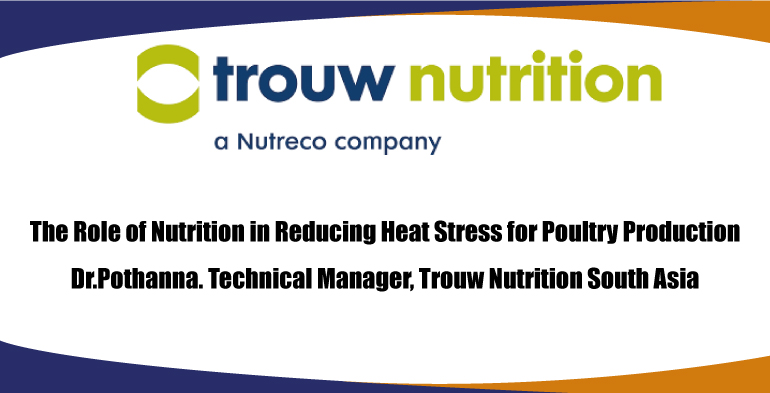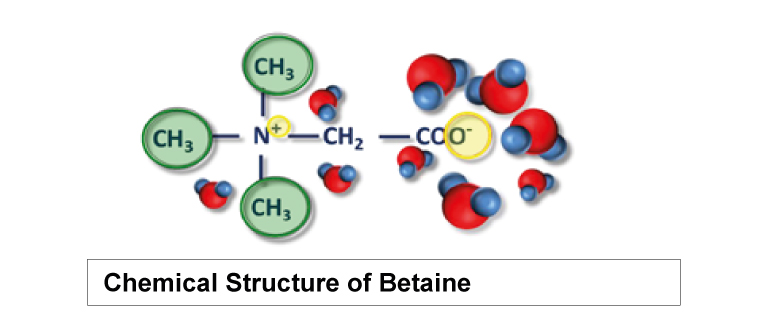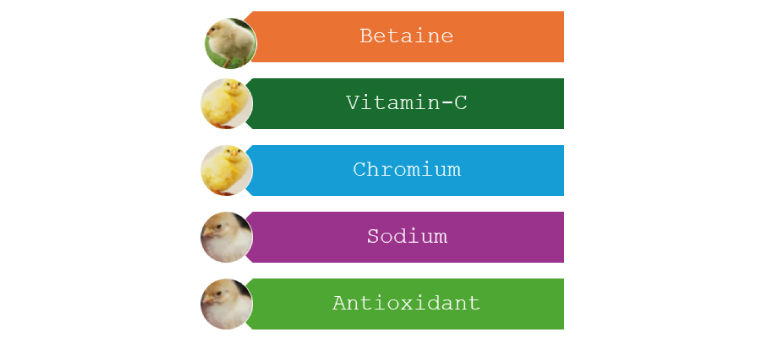
Poultry farming, a critical component of global food production, faces significant challenges during the hot summer months. While heat stress can affect all livestock species, poultry are particularly vulnerable due to their unique physiological characteristics. Unlike mammals, poultry lack sweat glands and must rely on panting and evaporation to regulate their body temperature, making them less efficient at dissipating heat. Additionally, poultry have a higher metabolic rate, which results in greater internal heat production, further exacerbating the effects of high temperatures.
As a result, poultry experience reduced feed intake, slower growth, decreased egg production, and an increased risk of mortality under heat stress conditions. In contrast, other species such as cattle and pigs possess more efficient thermoregulation mechanisms, like sweating, that allow them to better cope with heat. Given these challenges, poultry farmers must implement targeted summer management strategies, including nutritional adjustments, to help their birds cope with the stresses of elevated temperatures.
Heat stress in poultry can severely impact their health, performance, and overall well-being. Fortunately, proper nutritional management can mitigate its effects. Below are the key nutritional parameters that play a crucial role in managing heat stress in poultry.

- Heat Stress and Protein Adjustments
During heat stress, it is essential to adjust protein levels in poultry diets to minimize metabolic heat production. High-protein diets, especially those derived from animal sources, can increase the heat load on poultry, exacerbating the effects of heat stress. Therefore, reducing animal protein intake during hot weather is crucial.
Plant-based proteins, such as soybean meal, are a better option during heat stress. They are easier to digest, produce less metabolic heat, and help poultry cope with high temperatures without additional stress. In addition, plant proteins are rich in essential amino acids, including arginine, which plays a key role in supporting overall metabolic functions.
The requirements for protein and amino acids remain largely consistent, regardless of environmental temperature. However, it’s important to avoid increasing the crude protein level in the diet, particularly from animal-based sources, as they tend to have higher heat increment values, meaning they produce more internal heat during digestion.
Vegetable proteins, such as soy, sesame, and sunflower, are preferred in the summer months, as they not only reduce the heat burden but also provide more arginine. Arginine absorption tends to be lower under heat stress, leading to an imbalance in plasma amino acids, which in turn increases amino acid catabolism and additional body heat. By using vegetable proteins, this issue can be mitigated, helping maintain better thermoregulation and reducing heat stress effects.
- Energy Density in Heat Stress
Energy density plays a significant role in managing heat stress in poultry. During hot weather, poultry may reduce their feed intake due to the discomfort caused by high temperatures. In this scenario, ensuring a high energy density in the feed becomes crucial. A higher energy density allows the birds to get the required calories from smaller amounts of feed, helping to maintain their nutritional status without increasing the total feed intake.
Energy Sources: Carbohydrates and fats are the primary sources of energy in poultry diets. During heat stress, fat is a particularly efficient energy source as it provides more calories per unit weight than carbohydrates or proteins, making it an excellent option to maintain energy levels without requiring large quantities of feed. However, it's essential to balance fat inclusion carefully to avoid any negative effects on digestion and gut health.
To maximize energy utilization, feed formulations may include higher proportions of fatty acids and carbohydrates that are easily digestible, such as corn and grains, which can provide readily available energy. Also, supplementing with energy-dense additives like fat sources (vegetable oils or animal fats) ensures that poultry can meet their energy needs during times of heat stress without overeating.
- Feeding Strategies and Nutrient Balance During Heat Stress
Effective nutritional strategies during heat stress involve not only what is fed but also how and when it is fed. High-fiber diets are known to increase metabolic heat production and reduce nutrient digestibility, which can exacerbate heat stress in poultry. Therefore, lowering dietary fiber during summer can enhance nutrient absorption and reduce internal heat generation. At the same time, maintaining a proper balance of essential minerals—such as calcium, phosphorus, and magnesium—is critical to support bone health, muscle function, and electrolyte stability, all of which are compromised under thermal stress. Adjusting feeding times to cooler parts of the day, such as early mornings and late evenings, encourages better feed intake. Offering smaller, more frequent meals throughout the day further supports nutrient uptake and reduces the digestive burden, helping poultry manage heat stress more efficiently and maintain performance
- Feed Additives
Vitamin C, or ascorbic acid, plays a pivotal role in supporting poultry health during heat stress. Its powerful antioxidant properties help neutralize free radicals, protecting cells and tissues from oxidative damage and promoting overall resilience. Vitamin C is essential for collagen synthesis, which supports the integrity of connective tissues, bones, and blood vessels—key factors in maintaining physiological stability under thermal stress. It also enhances immune function by boosting the activity of immune cells and cytokines, improving the bird’s ability to fight infections during challenging conditions. Additionally, Vitamin C acts as a cofactor in converting inactive vitamin D to its biologically active form, 1,25-dihydroxyvitamin D, thereby supporting calcium-phosphorus balance, bone health, and immune function. This multifaceted role makes Vitamin C an indispensable nutrient in poultry diets during periods of elevated environmental temperature.
Betaine, a naturally occurring derivative of the amino acid glycine, was first identified in sugar beet juice and functions both as a methyl donor and a cellular osmoregulator. As a methyl donor, betaine contributes three methyl groups crucial for vital metabolic pathways such as DNA methylation, protein synthesis, and the regeneration of methionine and creatine
In poultry, the ability to convert choline into betaine is limited, making dietary supplementation essential. Betaine also supports liver health by preventing fat accumulation in hepatocytes. Importantly, as an osmoregulator, betaine helps cells maintain hydration and structural integrity under stress conditions like high temperatures.Unlike inorganic osmolytes, betaine protects cellular enzymes from osmotic inactivation and sustains nutrient uptake. This dual role makes betaine a valuable nutritional tool for mitigating the adverse effects of heat stress in poultry production systems.

Chromium is an essential trace mineral that plays a significant role in alleviating the effects of heat stress in poultry. Its primary function lies in enhancing insulin sensitivity by supporting the action of chromodulin, a peptide that strengthens insulin-receptor interactions. This facilitates efficient glucose uptake by cells, ensuring optimal energy utilization during periods of elevated energy demand caused by heat stress. By promoting stable blood glucose levels and reducing metabolic strain, chromium helps maintain performance and energy balance. In addition, chromium contributes to immune resilience by lowering circulating cortisol levels—a stress hormone known to impair growth and immune function. This dual benefit of improved metabolism and stress modulation makes chromium a valuable component in summer feed strategies aimed at safeguarding poultry health and productivity
- Conclusion
Farmers can adopt a comprehensive approach to mitigate summer heat stress in chickens by combining environmental controls, feed and water management, and stress-reducing treatments. Trouw Nutrition’s Maxcare AHS(Anti-Heat Stress) is an important product to consider because it contains Betaine, Vitamin C, and Chromium, which are known for their anti-stress and antioxidant effects. These substances assist broilers and layers stay healthy and perform well in high temperatures. The Maxcare AHS dosing rate ranges from 0.5 kg to 1 kilogramme per tonne of feed. Implementing such solutions, combined with typical management approaches, can considerably lessen the impact of heat stress, leading to lower death rates, improved egg production, and faster growth rates in young pullets.
